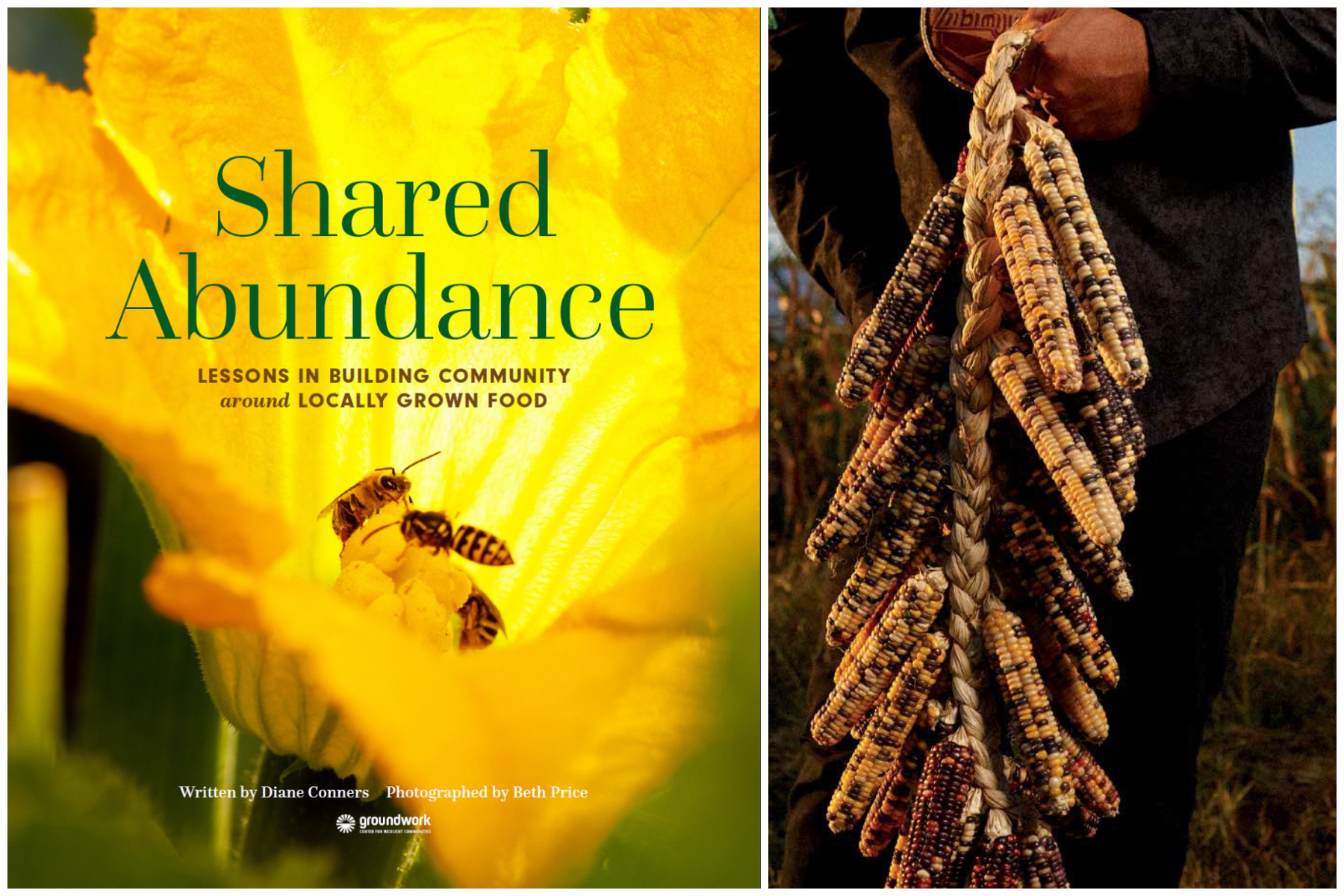
A 20-Year Success Story: New Book Highlights Northern Michigan's World-Class Local Food Economy
By Craig Manning | July 13, 2023
The ability to buy fresh, locally-grown produce even in the dead of a northern Michigan winter. The plethora of CSA (community-supported agriculture) programs locals have to choose from – and the impressive number of those programs that sell out every single season. The fact that one of the area’s most acclaimed restaurants is a hyper-local, agriculture-driven spot literally called “Farm Club.”
These are a few of the things that local journalist, author, and food and farming policy specialist Diane Conners highlights as success stories in her new book, Shared Abundance: Lessons in Building Community around Locally Grown Food. Penned by Conners, featuring photography by Beth Price, and published by Traverse City’s Groundwork Center for Resilient Communities, Shared Abundance is a 192-page exploration of northern Michigan’s thriving local food economy – and a case study for how other areas might go about building something similar.
According to Jeff Smith, Groundwork’s communications director, Shared Abundance is the celebration of a 20-year journey – one that’s taken the local agricultural industry from the brink of oblivion (or something close to it) to a stable, resilient system that is admired all over the country.
“20 years ago, Groundwork published this report that was called ‘The New Entrepreneurial Agriculture,’ and it was the first time Groundwork really jumped into a food and farming world,” Smith explains. “The person who wrote that report, Patty Cantrell, kind of staked out this vision – which was rising at the time, nationwide – of helping people see there was a way to make a living in farming outside of commodity farming. You didn't need 3,000 acres of corn to be a farmer. Instead, we could resurrect what you might think of as the old-fashioned farming lifestyle, where a farmer grew lots of different things and then sold them to his or her neighbors, or sold them at a farmer’s market, or sold them to local businesses, and then that could be a viable way to make a living.”
As Conners explores in Shared Abundance, Cantrell’s vision of a heavily-localized farming economy was not what Traverse City or its outlying areas had at the turn of the millennium. “This region has celebrated its agricultural heritage with the National Cherry Festival. But many of our farmers, like others across the nation, couldn’t make a living with the roller coaster of commodity prices,” she writes.
One example in the book is the story of Harry and Barbara Norconk, asparagus farmers in Empire who, 20 years ago, were wondering if they could even continue farming given the economics of commodity agriculture. The year was 2001, and food processing companies – to which the Norconks had always sold about 90 percent of their 40-acre crops, were “flooded with asparagus from Peru thanks to duty-free access in a U.S. trade agreement meant to lure Andean farmers away from growing coca for cocaine.” Suddenly, the Norconks were getting just 42 cents a pound for their asparagus – a 30 percent drop from what the prices had been before, and a price so low that it didn’t even cover the cost of production.
The Norconks shifted their approach to selling fresh asparagus to local grocery stores, restaurants, schools, hospitals, and food pantries, and began netting between 90 cents and $1.25 per pound instead. Fast-forward to today and these local farmers are still selling local, fresh asparagus to wholesale accounts, now for $2.35 a pound. Processors, meanwhile, are paying about 87 cents per pound.
Per Smith, the 20th anniversary of the ‘New Entrepreneurial Agriculture’ prompted Groundwork to commission the Shared Abundance book, which is packed with anecdotes and success stories like that of the Norconks. From the birth of Taste the Local Difference, which started as a guide to help area residents find and buy locally-grown and sourced food, to the stories of businesses like Farm Club or agricultural alliances like Michigan Farm Coop, Shared Abundance tells the story of how northern Michigan ag shifted its focus from commodity-crop cherries toward a more locally-oriented food economy.
“We now have a local food economy that is respected and known nationwide,” Smith explains. “So, we thought, ‘Oh, it’s the 20th anniversary of this report. Why don't we take this moment and write like a book about it?’”
While Smith does think Groundwork and its “New Entrepreneurial Agriculture” report were “an important step in helping build the region’s local food economy, he says the goal of Shared Abundance is not merely to toot the organization’s horn. Rather, he tells The Ticker the book is intended “as a sort of giant case study” about how a community can foster and grow this type of locally-oriented, self-sustaining system for itself.
“Yes, it's celebrating what we've done here,” Smith says of Shared Abundance. “Yes, it's celebrating many, many individuals who have been a part of this, and it’s honoring their work. But really, the mission is to expand the local food economy idea across America.”
The book, he adds, is even formatted as something of a “road map” for other communities to follow. It splits into seven primary sections – each concerning a topic like “Building Economy,” “Marketing & Connecting,” or “Infrastructure” – and each part concludes with a “Playbook” of key tips or takeaways that other areas could implement.
It’s good timing for Groundwork to have a resource that could feasibly serve as a “how to” guide for replicating northern Michigan’s success. Late last year, the organization received a nearly-$900,000 grant from the United States Department of Agriculture (USDA) to expand its work in building local food economies to 16 counties along the Lake Michigan coast, “from the Mackinac Bridge to Holland.” Over multiple years, Groundwork will work with 36 different “stakeholder partners” – including food producers, distributors, processors, schools, and food pantries. The goal, Smith says, is to take the strategies that have worked in the Grand Traverse area and use them to build similar food economy networks, marketing systems, distribution channels, and infrastructure in other places.
While Shared Abundance is intended in large part as a guide for other communities, Smith hopes local readers will give it a look, too, if only to gain some new perspective on one of northern Michigan’s most important and most unique assets.
“The benefits of a local food economy, there are so many,” Smith concludes. “It’s about resiliency. It’s about food access. It’s about health. It’s about the environment, because small farms tend to farm more sustainably. So, it’s a big, sprawling story to tell, and we try to tell that story with this book. It’s our way of pointing out that the local food economy here is remarkable. But because we’re close to it and get to live with it every day, we maybe take for granted.”
Comment






